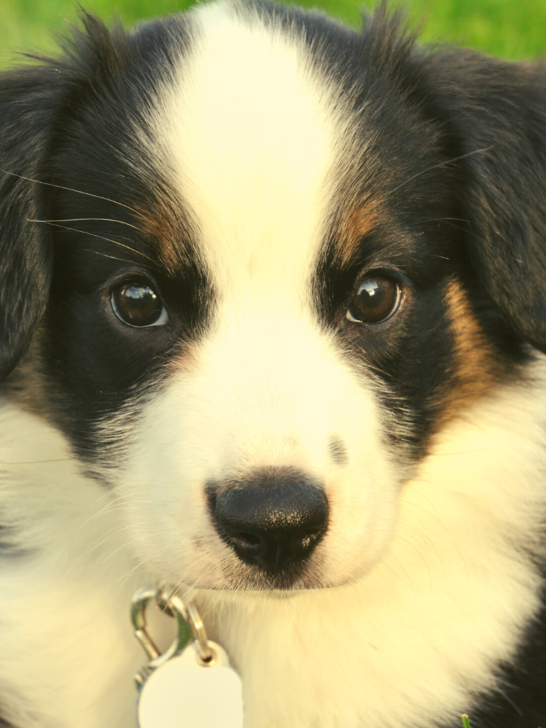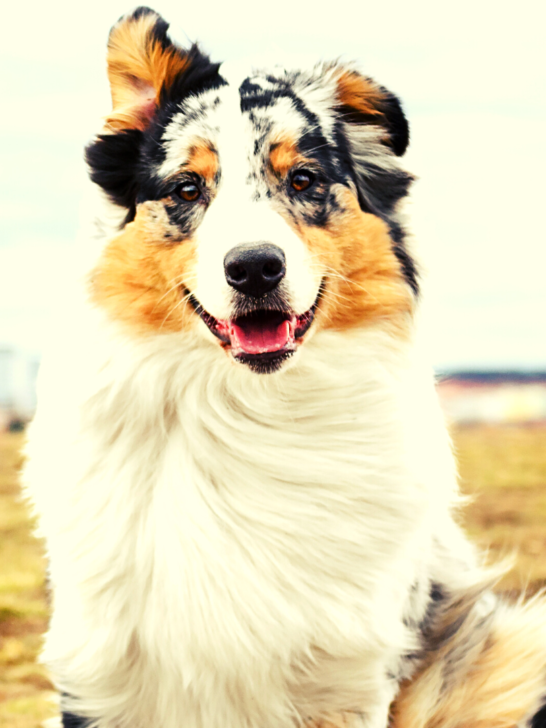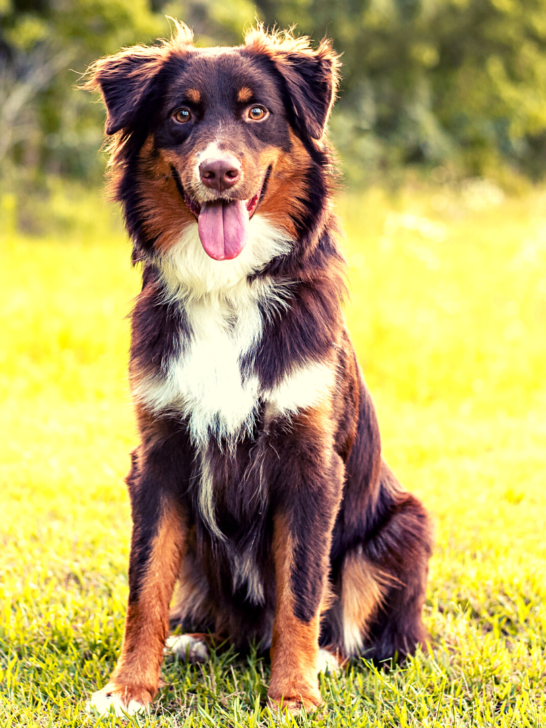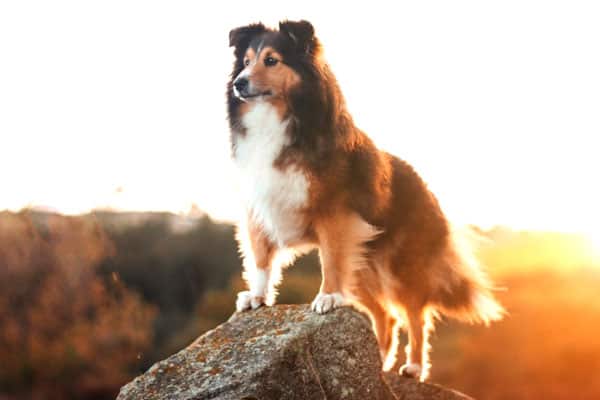Dalmatian Australian Shepherd Mix: The Aussie You Love, With More Spots!
If you’ve ever seen Cruella De Vil, you might have become slightly obsessed with Dalmations and their unique spotted coating of black and white.
And as for Australian Shepherds, they are incredibly popular and well-renowned for being not only beautiful in appearance, but highly intelligent and obedient.
This crossbreed definitely mixes the cuteness of both parent breeds, and the result is a fluffy dog with both spots and Shepherd coloring which can be really appealing.
However, this is quite a rare crossbreed to come across and it isn’t always easy to find a litter of them. This makes them both controversial and highly sought out!
But a crossbreed is about a lot more than simply how cute and good-looking the dog is. There are other things to consider, such as temperament and physical traits, and how both breeds mix into one another. Is this really the dog for you?
Well, we can tell you about everything that you need to know and more, breaking down all the basics of the Dalmatian and Australian Shepherd mix, and how it combines the traits of both parent breeds into one.
Let’s get right into it!
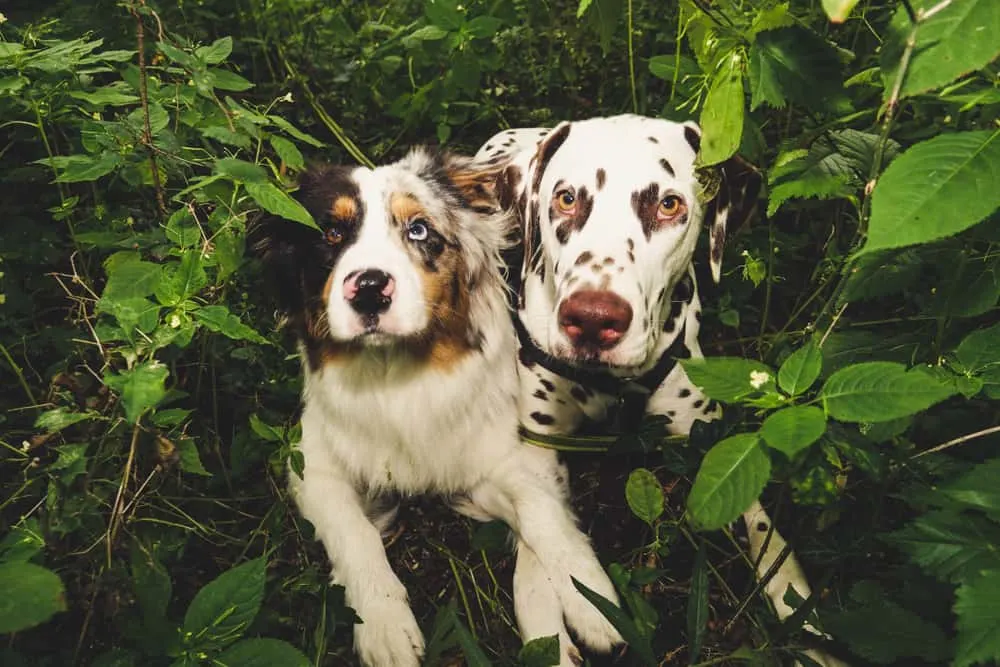
Dalmatian and Australian Shepherd mix: History of the breed
In order to fully understand a dog breed, it’s important to take a look at its origin, as most types of dogs were specifically bred for a purpose, and that purpose can affect the kind of traits that they have developed, both in appearance and behavior.
As the crossbreed of Dalmatian and Australian Shepherd is essentially just a combination of both, let’s take a closer look at the origin of each to get a better understanding!
History of the Dalmatian breed:
Dalmatians come from what is present-day Croatia. Specifically, they come from a region known as Dalmatia, hence the name Dalmatians! They were originally bred for two different purposes, as hunting dogs, and as carriage dogs.
They were also often used as guard dogs to protect the borders of the region, as well as the territories of the owners.
As a consequence, Dalmatians are highly protective and excellent guard dogs nowadays. So while they are incredibly friendly and loyal to their owners and those they become familiar with, they can be quite aloof and distant from strangers and other dogs.
As carriage dogs, they would clear a path and guide the horses, as they get along pretty well with bigger animals. Dalmatians are highly intelligent and eager to work, and although they are generally just pets and companions nowadays, they still crave training and activity!
In fact, you might notice that they instinctively become the watchdogs of their house!
They have become a pretty popular breed, although their aloof and distant behavior towards strangers has sometimes made them known for being “unfriendly”.
History of the Australian Shepherd breed:
Although these Shepherd dogs are referred to as Australian, they actually originated from California in the 19th century.
The name is instead a reference to the different herding dog breeds they were developed from, which were imported from Australia and New Zealand.
They were primarily bred as herding dogs, known for being highly intelligent, incredibly active, and extremely loyal and obedient. The perfect traits of a working dog that is also good within families.
They are still used for herding nowadays, but they have become more popular for their athletic capabilities in competitions and shows, and for how good they are as pets within families.
History of the Dalmatian and Australian Shepherd mix:
The crossbreed between the Dalmatian and the Australian Shepherd is a pretty new hybrid dog that is quite rare, and not all that popular.
However, many people specifically seek this mix, as it is very appealing in its appearance and combines excellent traits from both parent breeds.
Personality and Temperament of a Dalmatian and Australian Shepherd mix:
The breed of a dog can have a significant impact on the overall personality and temperament, although of course, all dogs then have their own individual personality and traits.
When it comes to crossbreeds, they will usually have been bred to keep the best traits of both parent breeds, which is why they are often highly sought after and well-regarded.
The thing is, Dalmatians and Australian Shepherds can seem pretty different from one another, so how do they merge into one? Let’s start by looking at their individual personality and temperament traits.
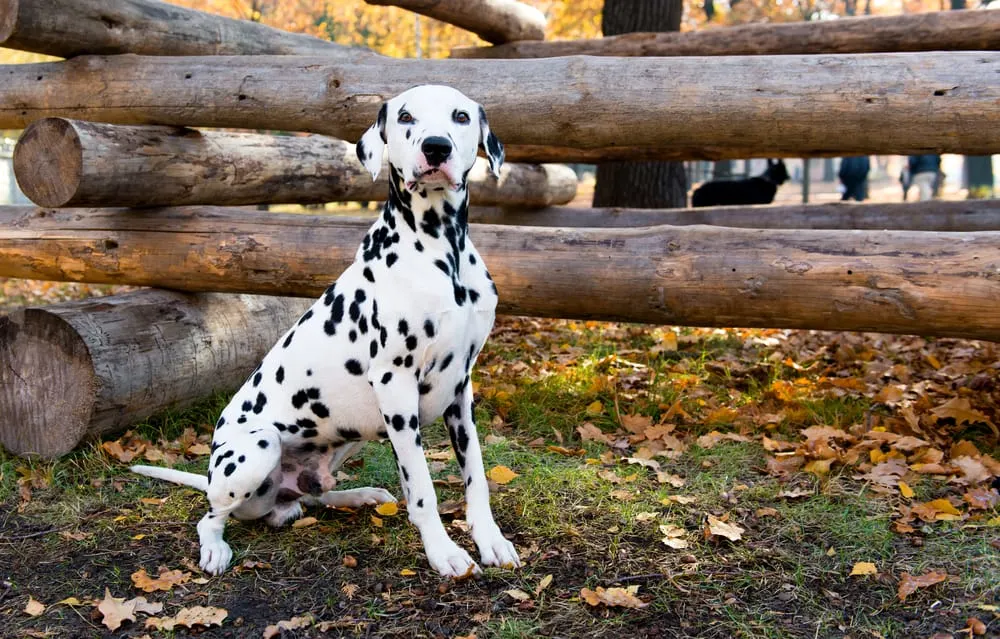
Personality and temperament of a Dalmatian:
Dalmatians are often rumored to be bad with families and unfriendly, but this couldn’t be further from the truth. In reality, Dalmatians are playful, sensitive, incredibly loyal, and very loving towards their family group.
They are actually great with children, although they can sometimes be a bit too high energy for playing safely.
They are very intelligent and easy to train, and they love to be engaged with specific tasks and activities. They are also instinctively protective, which is why they make some of the best guards and watchdogs.
They can be a bit distant toward strangers and can even be aggressive to other dogs, which is where you might want to be careful. This is because they are very protective of their own.
They also have a great memory and will remember different people and how they are treated.
But overall, the main takeaway is that they are super high-energy and active, ready to go at any moment!
Personality and temperament of an Australian Shepherd:
Australian Shepherds are one of the most popular herding breeds and are well known for being incredibly intelligent and easy to train.
In fact, these dogs are all about pleasing their owners and performing tasks, and they are known for being prone to obedience, which is what makes them such excellent working dogs.
They are very affectionate and friendly and will get along not only with their family but with strangers and other dogs too. They love interacting and socializing, but will therefore require a lot of attention and love in return.
However, be warned that they are very active and high-energy, and they need a lot of mental stimulation and training in order to thrive and be happy!
Personality and temperament of a Dalmatian and Australian Shepherd mix:
It can be really hard to predict the personality and temperament of a crossbreed, as it could inherit its traits from one parent breed, the other, or both.
With both the Dalmatian and the Australian Shepherd being very high-energy working dogs, the crossbreed is very likely to be equally active and in need of big amounts of exercise and mental stimulation.
A lot of training will be required in order to keep these dogs happy.
The herding of the Australian Shepherd might mix with the guarding of the Dalmatian, which will make these dogs highly alert and protective, as well as bossy with smaller animals and even children.
You might want to keep an eye on them with younger children to make sure that the playing is always safe and not too much for the children to handle!
This crossbreed will usually be very loving and affectionate, although that’s a 50/50 when it comes to strangers and other dogs, depending on which parent breed it takes after. What is 100% certain is that they are very intelligent dogs!
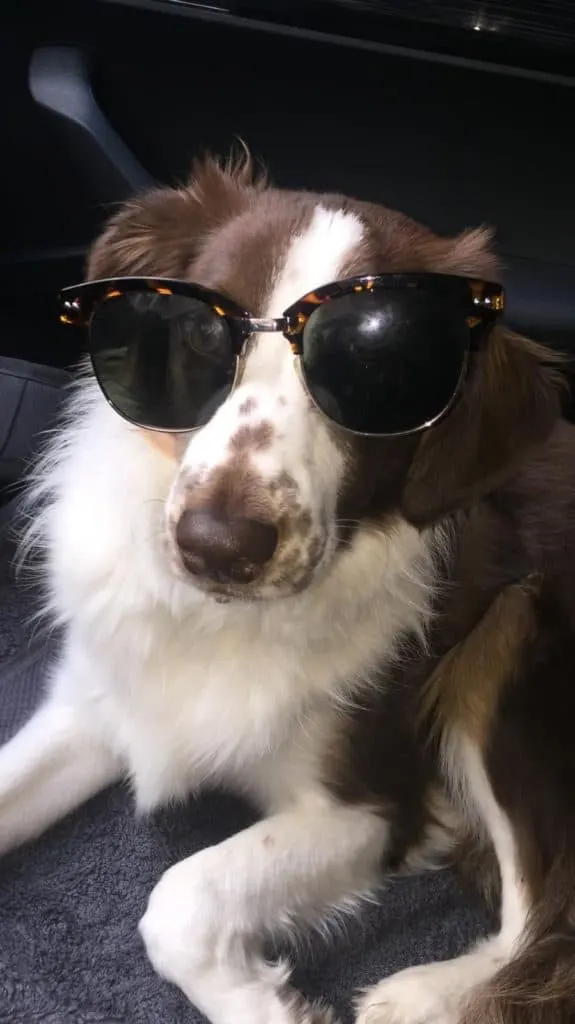
Physical traits of a Dalmatian and Australian Shepherd mix:
When it comes to the physical traits of a crossbreed, it is usually simply a mixture of both parent breeds, in this case, a combination of Dalmatian and Australian Shepherd.
Dalmatians have short coats, and Australian Shepherds have long thick coats of fluff.
The thing is, a dog needs to inherit the long hair gene from both parents in order to showcase it, which means that the crossbreed of Dalmatian and Australian Shepherds can be fluffy, but they will always have a short coat of hair.
As for the color, it can vary a lot. Usually, they will be white with a combination of spots and freckles of different colors that match the patterns of the Australian Shepherd. Truth is, that appearance can come out in all sorts of ways!
They are medium-sized dogs, like both their parent breeds, and the exact height and weight can go one way or another. Dalmatians will usually be between 19 and 24 inches tall, weighing between 45 and 70 pounds.
Australian Shepherds, on the other hand, will usually be between 20 to 23 inches tall, weighing between 25 and 55 pounds.
Overall, the Dalmatian and Australian Shepherd mix will have an athletic build with strong muscles, providing endurance and high energy levels.
Traits and Exercise Needs for a Dalmatian and Australian Shepherd mix:
Both the Dalmation and the Australian Shepherd are incredibly high-energy and require a lot of mental and physical stimulation, on a regular basis. They need interaction, attention, and many different tasks to focus on and engage with.
So it is no wonder, therefore, that the crossbreed is equally in need of exercise and attention.
In fact, Dalmatians are known to become slightly destructive when not given enough exercise and mental stimulation, and Australian Shepherds can become restless or hyperactive if not tired out.
So basically…make sure you give this crossbreed plenty of daily exercise and plenty of tasks and training!
With the training itself, it should be relatively easy. Both parent breeds are intelligent working dogs, used to being trained.
However, if your crossbreed takes a little more after the Dalmatian, you might need some more patience and effort when it comes to training.

Grooming needs for a Dalmatian and Australian Shepherd mix:
Although the crossbreed between a Dalmatian and an Australian Shepherd will have a short coating of hair, it will be prone to shedding, as both parent breeds shed quite often. So…no escaping the dog hairs being everywhere problem sadly.
You will also need to groom the hair quite regularly, brushing through it to remove excess hair and to keep it detangled.
Ears should also be cleaned regularly, as these breeds tend to get some wax build-up in there. Other than that, they don’t really need much grooming or bathing!
Longevity and Health for a Dalmatian and Australian Shepherd mix:
The lifespan of a dog can depend on many different factors, not just the breed. However, the breed is a pretty good indicator of the average lifespan to expect from a dog, and in the case of a crossbreed, you should look at the average longevity of both parent breeds.
Dalmatians, on average, live up to between 10 and 14 years. Australian Shepherds, on the other hand, usually live up to between 13 and 15 years. Combined, it’s a pretty good average for longevity, and the crossbreed will likely live around 13 years or so.
Factors such as the quality of life and the health of your dog will have a big effect on the exact lifespan and longevity!
As for health, both Dalmatians and Australian Shepherds are prone to suffering from deafness. This is something usually associated with white fur in dogs, so it is said that you should avoid dogs with white ears, as they are more likely to have hearing problems.
Nevertheless, you should always inquire as to the health of the parents when you contact the breeder for your puppy.
Dalmatian and Australian Shepherd mix: is this the right dog for you?
Okay, so now that we’ve covered all the basic information about the crossbreed mix of Dalmatians and Australian Shepherds, it’s time for the important question: is this the right dog for you?
To answer this question you need to think about your own lifestyle and home, and whether it’s a good fit for this specific dog. This crossbreed dog will require a lot of daily exercise and physical activity, as well as a lot of mental stimulation and attention.
Do you have enough free time to deal with this?
They also require consistent training in order to thrive and be engaged and to avoid them getting bored which can lead to issues down the line.
The ideal house is somewhere with plenty of space. And ideally, no small children or other pets, as the herding and guarding instincts combined could be a bad mix with this.
So families with older children, or no children at all.
















